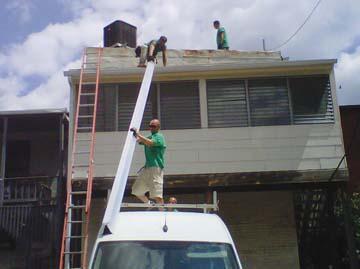The Green Phoenix
By • August 25, 2011 0 1092

Home to Congress, Washington, D.C., is the center of social movements that sweep our nation. Innovative and inspiring ideas are brought before our nation’s leaders, are debated and refined, and often transformed into legislation.
Recently, the hype has been about “going green” and making changes at home and at work to lower one’s carbon footprint. It’s now fashionable to wear “organic” clothing and to find a blue recycling bin to put aluminum cans instead of throwing them away.
In 2009, the House passed a historic climate change bill that requires 20 percent of electricity to come from renewable sources by 2020. The bill also increases electricity prices by $175 a year per household by 2020. Yet, even with congressional pressure to improve energy efficiency, why aren’t more local businesses following the trend of “going green”? The high cost of installing renewable energy systems and the significant time commitment required to explore greener resources are just two challenges that business owners face when making the switch to a greener business model.
One local businessman, John Hays, has managed to overcome such setbacks and convert his Georgetown store, The Phoenix, into an environmentally friendly business. For years, Hays has demonstrated a commitment to sustainability through recycling, selling renewable bags, and buying products with “fair trade” certification.
About a year ago, Hays wanted to make his commitment to the environment even stronger and signed up to install 30 solar panels on the roof of The Phoenix. Hays recognizes the significant cost of installing solar panels and how many might find the numbers daunting, but has managed to take advantage of numerous local and federal incentives that make the transition more affordable. “One-third of the cost of the panels is funded by the DC government,” Hays explains, “and I will also receive a 30-percen tax cut from the federal government.” In addition, Hays can exchange some of the energy produced by the solar panels in the form of solar Renewable Energy Credits (sRECSs) for cash from local electricity distributors such as PEPCO. With financial help from the D.C. government, the federal government, and sRECs, Hays saw little stopping him from converting to solar energy.
The solar panels are expected to generate over 7,000 kilowatts of power each year, which will amount to 60 percent of The Phoenix’s total power usage. After five years, the total energy produced by the panels will make up for their cost.
Hays hopes that other local businesses will follow in his footsteps and install solar panels or make other changes to promote the environment. “All the economic incentives in place make using renewable energy possible,” Hays says. “With rising energy prices, companies might be paying more for power if they don’t make the switch.” An investment in solar energy today might even be profitable in the long-term.
Next week, the installation process will be complete and the solar panels will be up and running, generating energy for The Phoenix while simultaneously helping Georgetown become a greener neighborhood. Who will be next?
- Solar panel construction at The Phoenix. | Lara Mitra
- Lara Mitra



